Sir Antony Gormley interview: 'I don’t have any choice over this: it's what I was born to do'
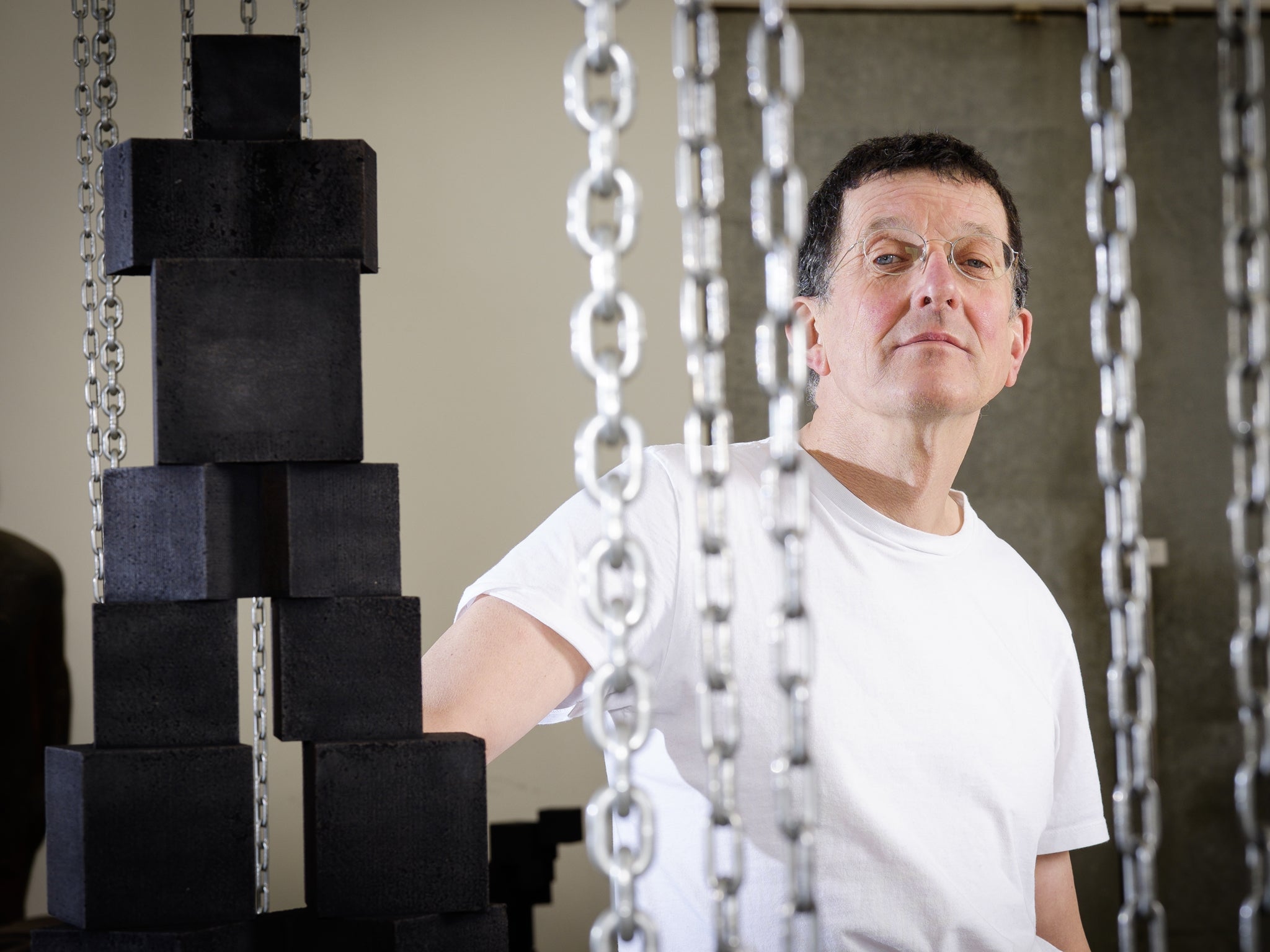
Sir Antony Gormley, 64, is lying on his back on the smooth concrete floor of his studio and is swinging his long legs from side to side. Paint-spattered trousers, red socks, hiking boots, all cutting a lanky, alarming swathe through the air.
“I do about 60 of these,” he says. “It’s very good for the spine, I think.” He sits up, a bit puffed out, and starts to crunch his abs. “And then 50 of these – sit-ups – I have to, kind of, hold my feet down. I tuck them under the bed, or the radiator.”
To be fair, I kind of asked for this display. The last time I interviewed Gormley, in 2010, for Horizon Field, in which he scattered 100 sculptures across the Austrian Alps, he told me that he had hired a personal trainer. He famously uses his own body to cast his figures and, having just turned 60, he had found his art was getting a little plump. So is he still training?
“I got rid of him. No, Julian was very nice, but now I do my morning routine in order to be able to face the day. A few stretches, a few press-ups, a few sit-ups. You know...” Is he, I wonder, as he picks himself up off the floor and lopes back to his chair, worried about ageing? “No. I’m fed up with being old but you know, I’m getting used to it now. Didn’t ever intend to get old, but there we are.”
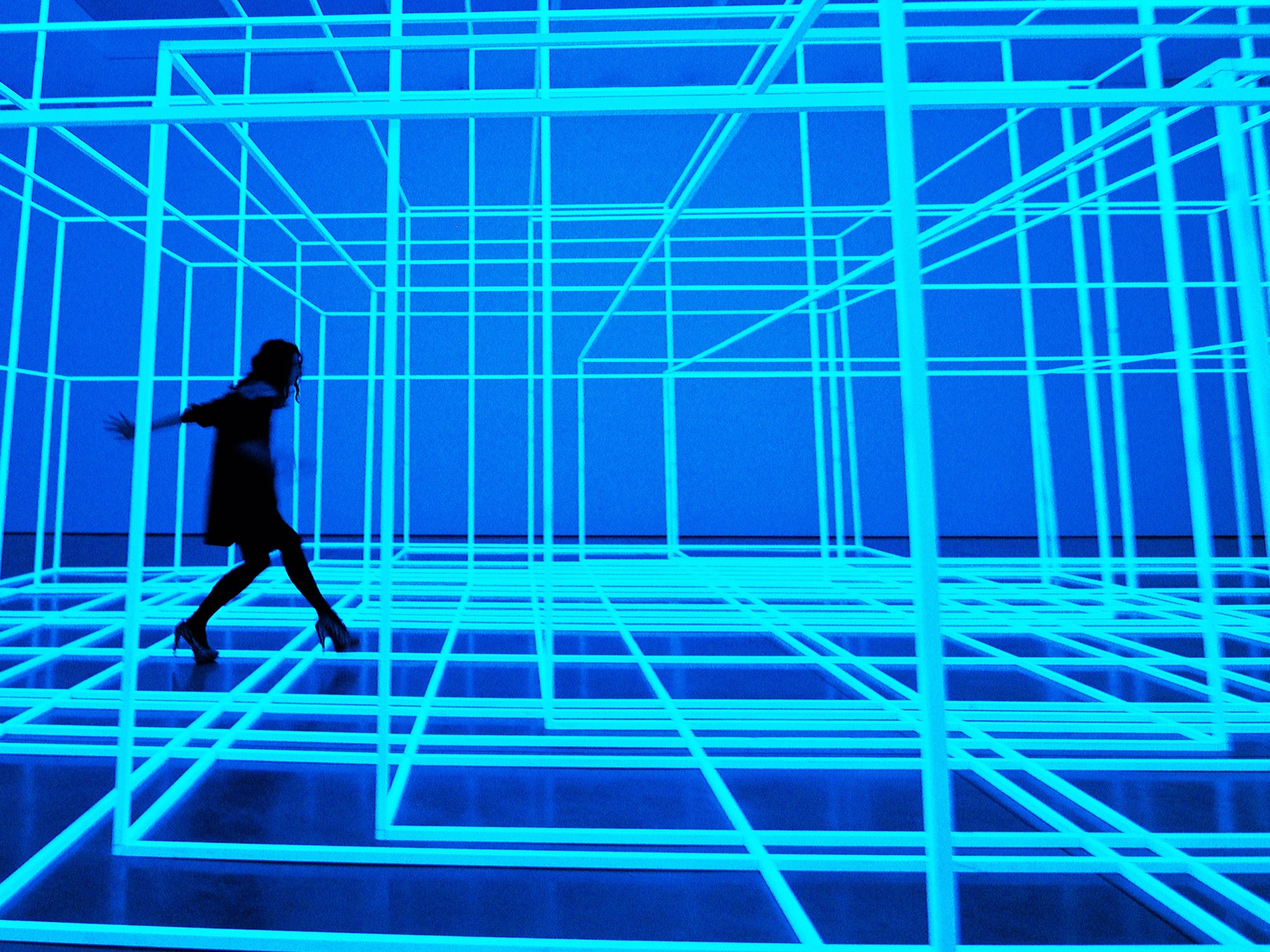
Certainly Gormley shows no signs of winding down to retirement. He has projects lined up for the next decade at least, all around the globe, from Paris to Florence, Harvard University to Lundy Island. It is world domination, albeit of a benign, aesthetically pleasing, sort. “I don’t have any choice over this. This is what I was born to do,” he says. “Or what I’ve found that I can do. The difficulty for me is just keeping up with the work, because the work is quite demanding. Listening to what the last work is trying to tell you what the next work should be. I’m just incredibly lucky to have the support of everyone who works with me and it’s never worked better. We’ve never had a better sense of common purpose.”
Today Gormley HQ, located in the industrial sprawl north of King’s Cross station, is abuzz with bodies – real and iron. Twenty-two people work here, and a further 10 at his studio in Hexham. They beetle about in face-masks and white overalls, attending to the sculptures, which stand and lie everywhere you look in a quite unsettling way. This morning, a small army is being labelled, swaddled in bubble-wrap blankets and winched into a lorry. They are on their way to Italy for a show at the Forte di Belvedere in Florence where they will crouch, lie and peer out from the 16th-century walls, as they are wont to do.
Gormley, meanwhile, is sitting silently in his big white drawing studio, one floor above the action, in front of a piece of A4 paper, a model of the fort and a black tile covered with a tiny orgy of tangled bodies. He is labelling them all with Tipp-Ex to make sure the life-sized versions don’t end up standing on their heads or something when they get to Florence. “Got to make it foolproof,” he says, absent-mindedly, peering through paint-flecked spectacles at an inch-high crouching man. He writes a number five on its head. “Most of them have died, or are going mad,” he continues, apropos of not very much. “On the whole the fortress is interrogated by bodies.”
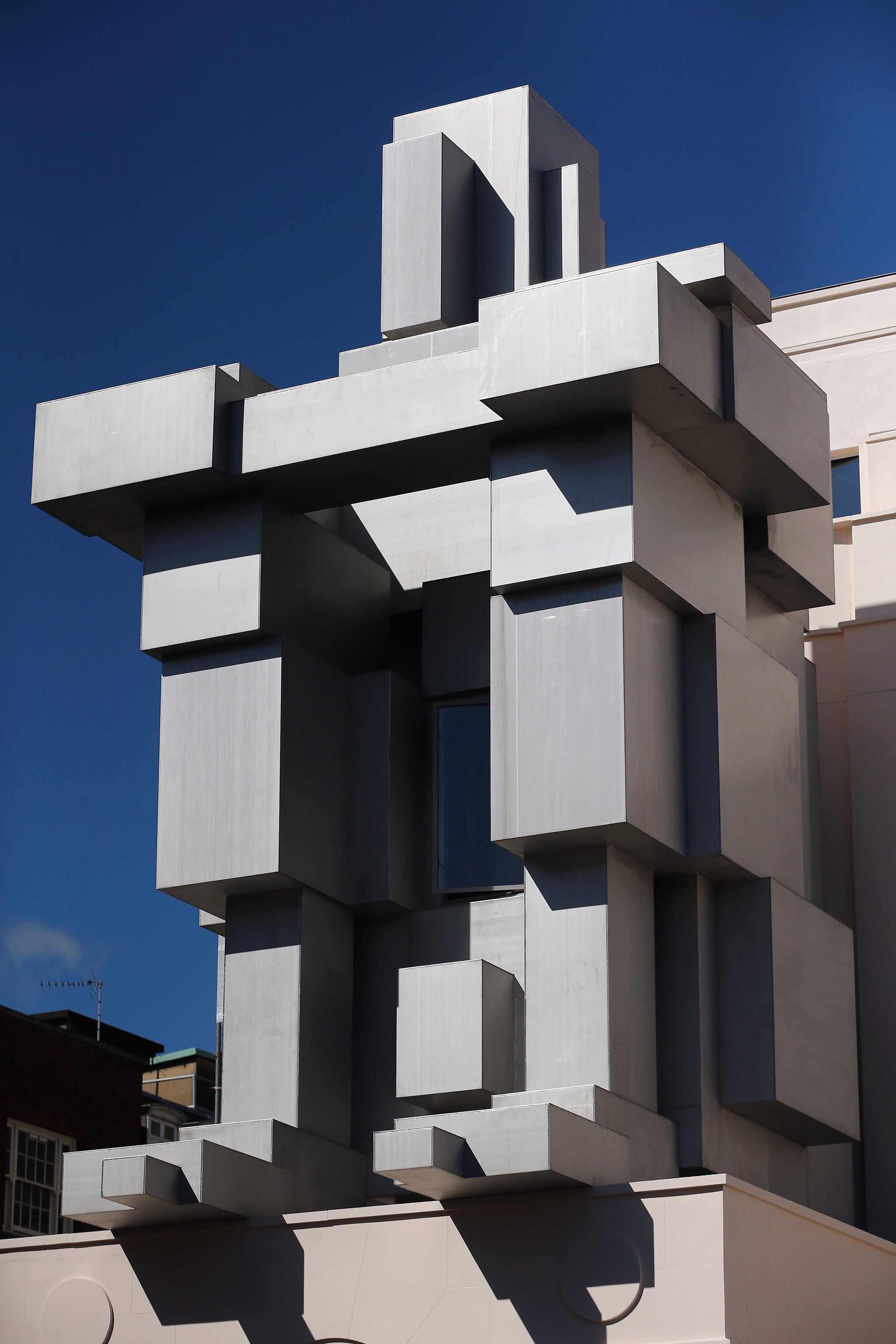
This is quite a Gormley thing to say. He has the air of an eminent academic – a rakish one, in his red neck scarf and matching socks – speaks commandingly softly and is easily sidetracked into art theory, or something more metaphysical. Ask him why he made a certain artistic decision and he will say, “It’s difficult. It’s rather like asking somebody, ‘why are you ill?’” He rarely gets through a sentence without an “in a way” or an “as it were”, but every so often he will stop, lean right in, and ask hawkishly, “What are we supposed to be talking about?” You don’t achieve world domination by being absent-minded all of the time.
His next big project is LAND, and it sounds like another crowd-pleaser. The Landmark Trust – which rescues extraordinary historic buildings and converts them into eccentric holiday homes – is marking its 50th anniversary by giving Gormley a free run at their properties. He has chosen five at which he will install a new standing figure.
As of next weekend, there will be Gormleys on top of the Martello Tower in Aldeburgh, Suffolk and next to Clavell Tower, an 1830 folly in Kimmeridge Bay, Dorset. One will stand on a rock in Saddell Bay in the Mull of Kintyre and another on a granite cliff on Lundy Island. The last will peer into the lock opposite Lengthsman’s Cottage in Lowsonford, Warwickshire. They will be there to see, free for all, for a year. “Then they’ll come back here and be ‘redistributed’.” Does that mean sold? “Yes, I think it does…” he laughs, sheepishly. “Yes.”
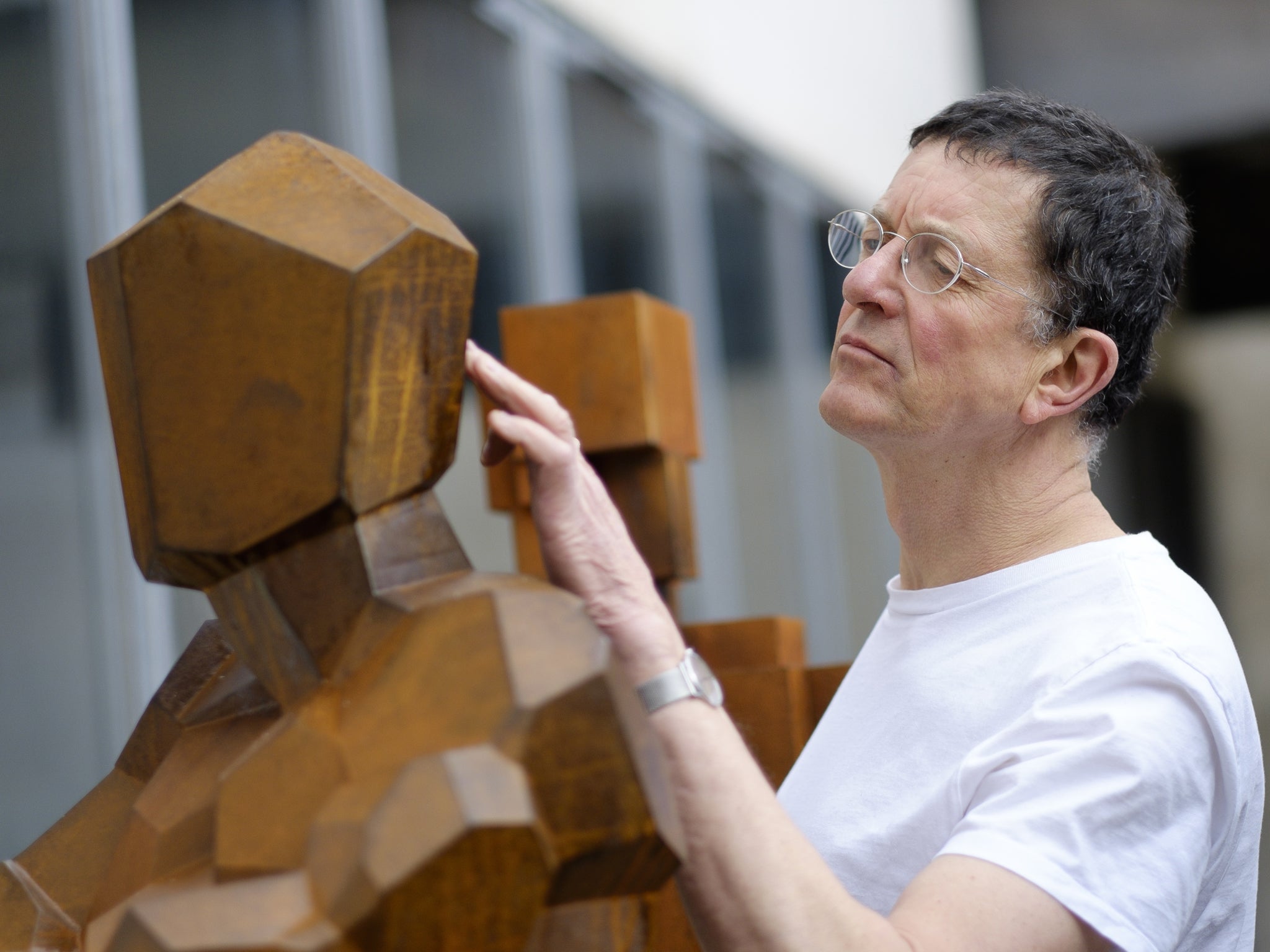
The idea is that the sculptures will act as a kind of “conductor or rod for thoughts or feelings that might arise at the site”, says Gormley. His own thoughts concern man’s uncertain relationship with nature, rising sea levels and global warming. “We are all very happily embedded in a world that is humanly made. And increasingly we like that. Exclusively. We go to the elemental world for holidays but we’re grossly inconvenienced – like you and I were getting here this morning – when it’s a bit wet. Because, actually, we’ve taken shelter totally for granted.”
All five figures are exposed and (barring the one on the South Stratford Canal) look out over wild, unpredictable water – the North Sea, the English Channel, the Kilbrannan Sound or the Bristol Channel. The statue at Saddell Bay will be partially submerged at high tide, but Gormleys are hardy souls. The artist has only ever lost one, and that was to an avalanche.
He has put his figures everywhere – in the sea, on mountains, in lakes, by motorways, in cathedrals, on top of skyscrapers in Manhattan and on plinths in Trafalgar Square. Is there anywhere he wouldn’t put a Gormley? “I wouldn’t put my work on top of mountains… Slightly disrespectful of nature.” He is very, very aware of man’s insignificance, he says. “I guess I’m interested in making these still, silent things that somehow vitalise us – simply by reminding us of how, in a way, dependent and vulnerable and precarious our situation is.”
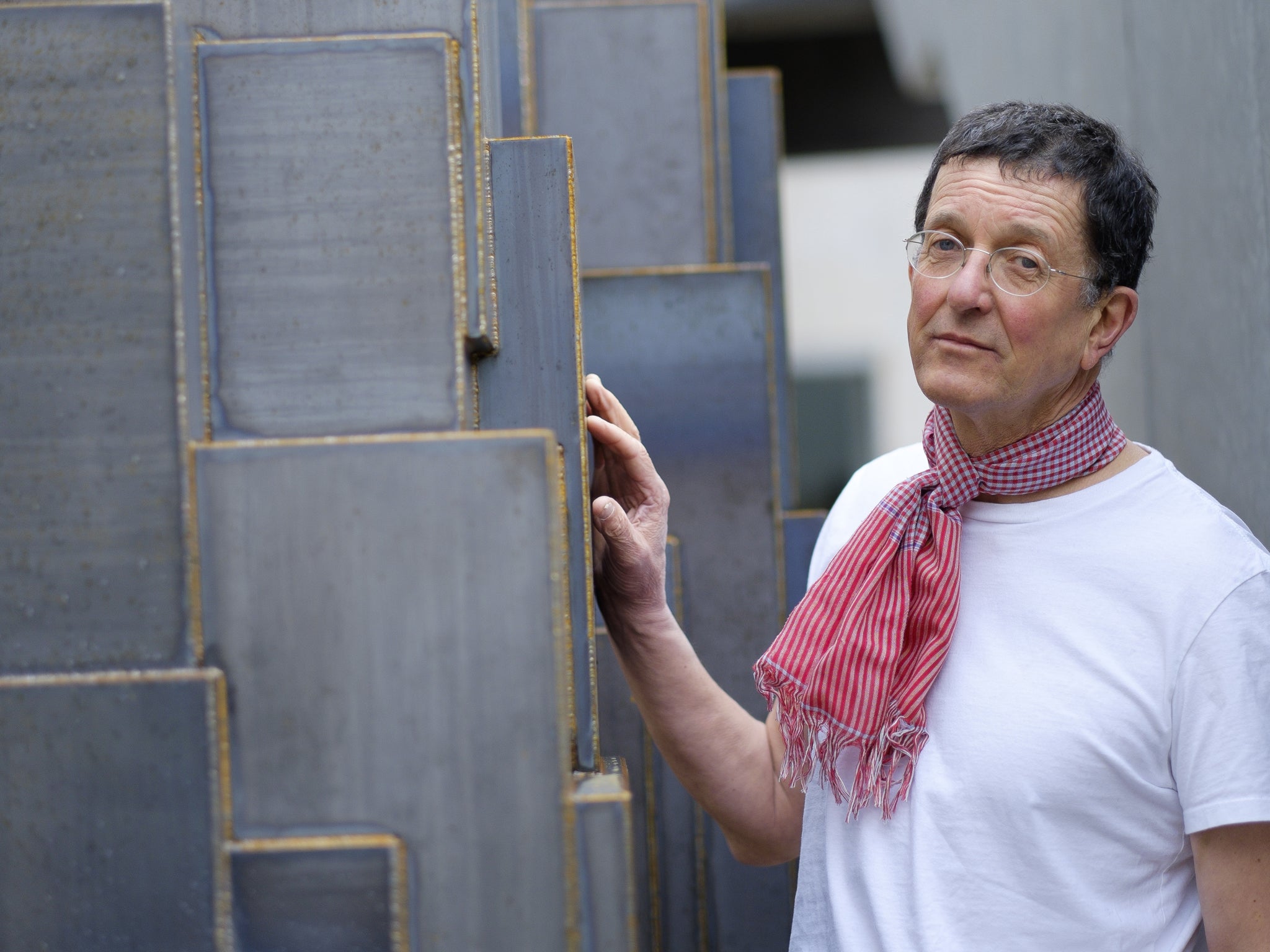
He is particularly proud of Another Place, his installation of 100 standing figures on Crosby Beach in Merseyside, which has been there for 10 years now. “That’s the test, I think. If you can’t think of the place without the object or the object without the place, it means that it’s made a marriage. And that is what has happened in Crosby. They came here for a temporary period and the people said: ‘We think this place is actually more interesting with them, than without them. And we’d like them to stay.’”
The LAND figures are more geometric, Brutalist, even, made of stacked cubes, rather than smooth body casts. It must be difficult to keep coming up with new ways to develop the big idea which made his name. “You could say that’s my peculiar burden, in some senses. I recognise that the human form has been in art almost as long as it’s been on the face of this planet. And finding a way of rethinking that…” He trails off.
For the new works, then, he did a 3-D scan of one of his body moulds, fed it into a computer to work out the size of the blocks and then stacked them, “like physical pixels”, to make a standing figure. The result is something more cyborg-like than Gormley-like. “It’s never been me!” he says, high-pitched. “I don’t know what that means. When I see my work, I don’t think, ‘oh, I was looking good that day’. That’s not the point. It’s very, very simple, my rationale for using my own body… Why make another body when you’ve got one already? It would make sense if you were interested in representation,” he sighs. “But I. Am. Not.” He is interested in the body as a place, not a thing. In other words, they don’t mean anything in and of themselves. “Exactly! They are floating signifiers.”

While LAND is classic Gormley – life-sized, isolated figures in nature, battling the elements – future projects show a more scientific side. Two of the works he says he is most excited about are a 40ft helix for the stairwell of the maths department at MIT-Harvard – “a chain of polyhedra that looks like it shouldn’t be able to stand up, but we’re hoping it will” – and a massive 11-ton graphite work for the Niels Bohr science faculty at the University of Copenhagen. Gormley takes a leap into the future? “Yeah, maybe. I mean, that’s a good of way of putting it.”
The new sculptures also reflect a burgeoning interest in architecture. In 2012, he exhibited Model, a 100-ton body made up of 24 interconnected steel chambers for gallery visitors to get lost in. Last year, he created Room, a luxury hotel suite in the shape of a crouching figure at London’s Beaumont Hotel. Now he wants to design a proper building. “I’d love to have a crack at it. I’d like to do a high-rise now. Or a low-rise, I don’t mind. A building in the form of a lying person. A United Nations HQ in the form of a peaceful, sleeping, Buddha-like body,” he laughs but then instantly ducks into the office next door to bring back a set of small, chunky iron models of a sleeping human. “I think this would make a fine building...” he says, stacking them proudly, like Lego.
He is not keen on the showy architecture that has come to define London’s cityscape. “These 240 towers that have been given permission for London, I don’t think there’s enough thought put into how they talk to each other. What are the forms of our cities that actually promote wellbeing and make us feel in some way that we are participants in the evolution of the city, rather than victims of it?” he asks.
“We’re now encouraging the likes of Zaha [Hadid] and Frank Gehry to invent new forms but in the process they’re making buildings that are, well, they’ve lost their responsibility as far as I’m concerned in terms of being practical, sheltering spaces.” He is just back from Gehry’s new Fondation Louis Vuitton in Paris: “Completely mad, absolutely invigorating, but totally useless.”
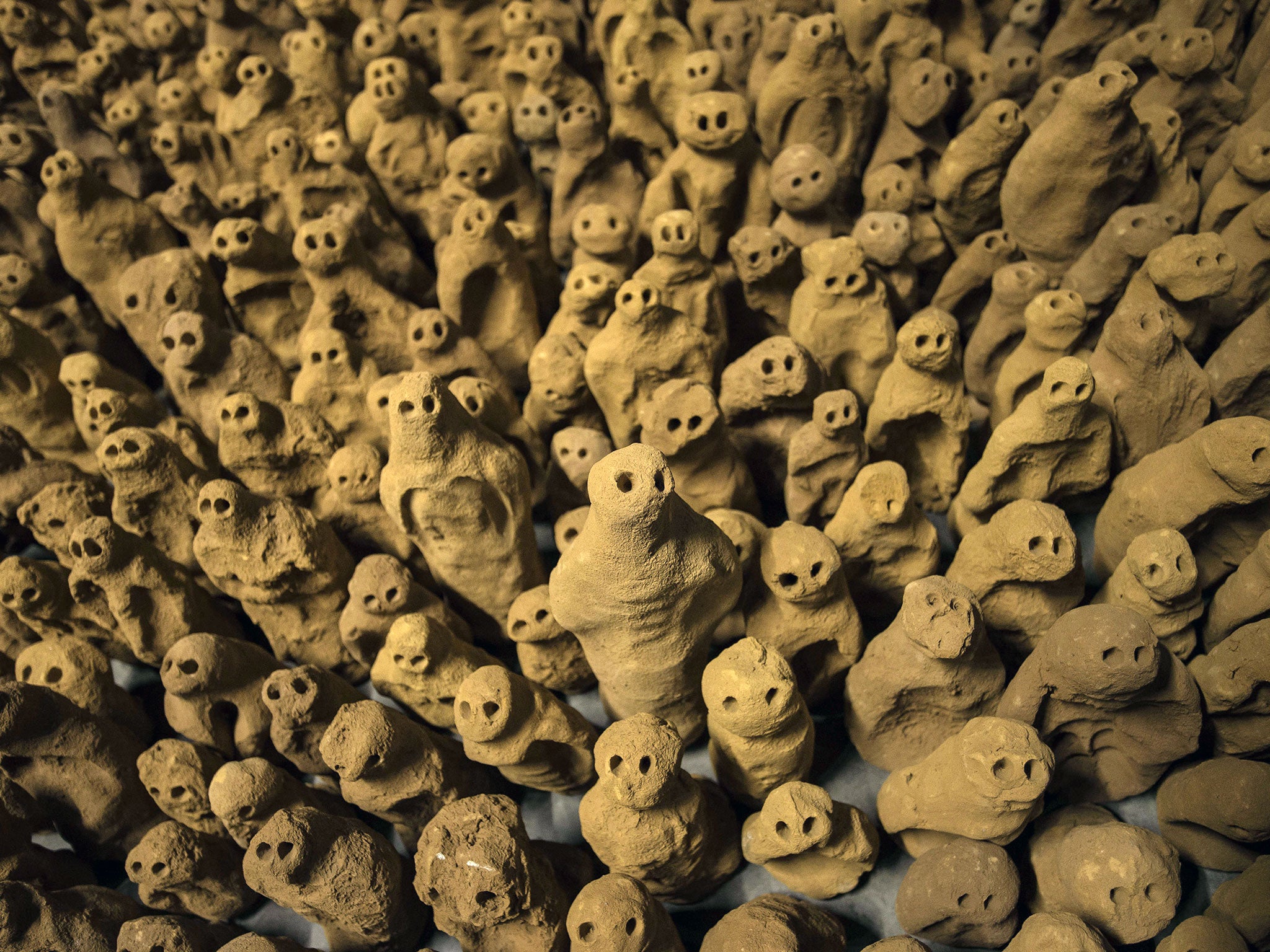
His daughter, Paloma, is an architect – her projects include Frank’s Café in Peckham and The Yard Theatre in Hackney Wick – and he has been inspired by her radical approach. He would love to work with her, “but she’s very, very demanding. Her social principles are so… I think she probably doesn’t really approve of the luxury industry that I seem to be attached to,” he murmurs. By which he means his work sells for millions? “Mmm. I hope the justification for me selling work is that the proceeds can go into making things happen that otherwise wouldn’t – in terms of work in public or collective space.”
One wonders what Paloma makes of her father being a Sir. He was knighted last year but only used the title for the first time a few weeks ago, when he was being fitted for his first custom-made suit. The tailors called him “Mr Gormley”. “And I said, ‘no, actually it’s Sir’. I had to laugh. That was the first time that I’d thought I was in the appropriate situation. I just thought that they might like to know, because that might help them…”
His two sons are creative too. Ivo is a film-maker and social entrepreneur and Guy is a photographer. Gormley goes pink with pride as he talks about them. “I learn so much from Guy. He’s always got time and he thinks about things so well. I mean, he’s so much brighter than me. No, he’s a really good artist.” His wife, Vicken Parsons – they met when they were studying at the Slade in the late 1970s – is also “a very committed artist”, so it is no surprise that their children have followed suit.
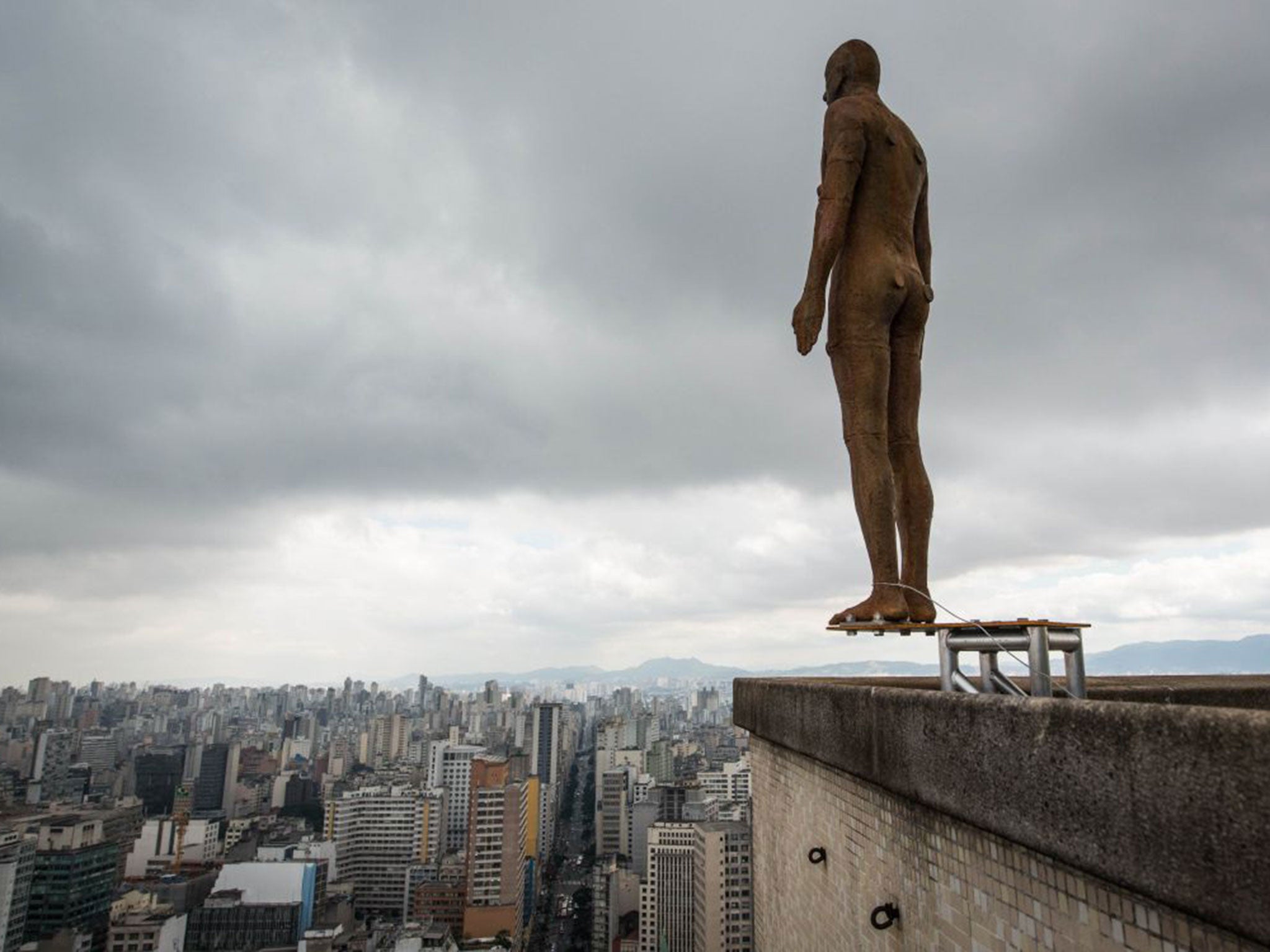
Gormley’s parents were rather different. They sent their youngest son (of seven) to Ampleforth, and encouraged him to go to Cambridge, rather than art college. He obeyed them, then spent two years painting his way around India and the Far East before enrolling at Central School of Art, then Goldsmiths, then the Slade.
His father, a pharmaceuticals magnate, and “roving Irishman with a bit of twinkle”, died while he was at the Slade. Gormley inherited his “determination to just keep going” from him. His mother, who died at the end of last year, aged 104, was similarly “pretty relentless.”
“Right to the end she would say, ‘Antony, I think you should go down and have a swim’ or something... Every single moment of our childhood was planned. So when we weren’t at school, we were being encouraged to sail or to swim or to play tennis or get on with things one way or another.” Did she like your work? “Yes she did. Well, she was a bit disturbed by this body obsession because she was a convert to Catholicism and was very keen on the idea of transcendence. She thought there was something a bit unhealthy, I think, about a more materialist position.”
Many would disagree with her. Gormley is one of the most popular artists in the UK, largely because his works demand active engagement from people. They hike to see his sculptures in the wild, they get lost in his misty, dark chambers, they put their bikinis on his beach figures, they even sat on the Fourth Plinth for him. Gormley is all for it, though he agrees that the trend for participatory art might have gone a bit far. “There’s a degree now to which ‘Uh! Amazing!’ has to come first…” he says.
Still, he loves to look at people looking at his art, and increasingly includes them in his catalogues. “I do, but I feel a bit like a voyeur. So I don’t do it very often but when I do, it amuses me. It’s not like I’m loitering with a clipboard, registering reaction. But… it’s not fair to pretend that the gallery is always empty.”
The other day he went to see his enduringly popular Angel of the North. “And, you know, people are spreading ashes, leaving tokens for lost loved ones…” he looks rather proud. “I don’t know about proud. It’s clear that the work is doing something that people need to be done. A place to think about the thresholds between life and death, a place where the provisional nature of daily human life can somehow make contact with something bigger, or wider, or whatever. That’s a function that religious or sacred buildings have had in the past. And I think that’s a vital job.”
‘LAND’ launches on the Landmark Trust’s Golden Weekend (16-17 May) and will be on view until May 2016 (www.landmarktrust.org.uk). ‘HUMAN’ is at Forte di Belvedere, Florence, Italy until 27 September 2015 (www.antonygormley.com)
Join our commenting forum
Join thought-provoking conversations, follow other Independent readers and see their replies
Comments